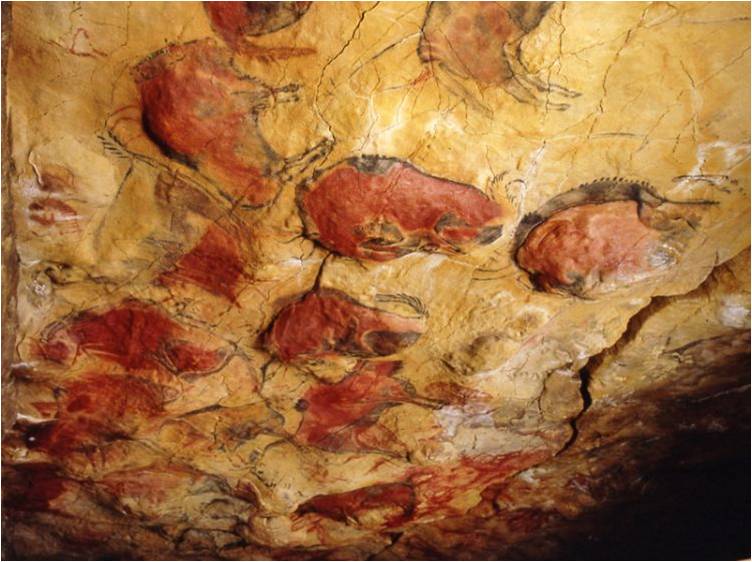A Literary and Cultural Journey in Cantabria, Spain

Cantabria, a small territory located North of Spain, keeps in its depth an extraordinary and dazzling underground heritage. Its caves decorated with Paleolithic rock art, declared by UNESCO as a World Heritage Site, are a worldwide reference of knowledge of a symbolic universe of the hunting-gathering societies that once lived in these caves during the last ice age, and they made sure to leave on the ceilings and walls of these caverns of Cantabria their vision of their surrounding world. The cultural and artistic legacy these populations left in the subsoil of Cantabria, constitutes a treasure of incalculable value that must be preserved so future generations can know, appreciate and enjoy the greatness of this unique and universal heritage.
What about Altamira? It was the first cave where the existence of Paleolithic rock art was scientifically identified and documented. The discovery of these paintings, by an eight-year-old girl, and subsequently published to the world by her father, Marcelino Sanz de Sautuola, was an extraordinary event since it forever changed the perception of prehistoric populations. Altamira is the greatest icon of Paleolithic rock art, both for the prodigious technical and artistic quality of its representations, and for the importance it has had in the last 140 years for the advancement of prehistoric science.
On the other hand, there is the figure of Benito Pérez Galdós. An illustrious Canarian writer, one of the most exalted pens of Hispanic literature, chose Santander as his second home, thanks to the benefits of its climate and the beauty of its landscapes. For 46 years, and uninterruptedly, he spent long hours in the capital of Cantabria, where he wrote an important part of his extensive literary activity and was rubbing shoulders with local personalities of stature such as José María de Pereda and/or Marcelino Menéndez Pelayo. Galdós became a resident of Santander after he bought some land there on which he built his residence “San Quintín,” which was very close to the Magdalena peninsula and the Sardinero beaches.

